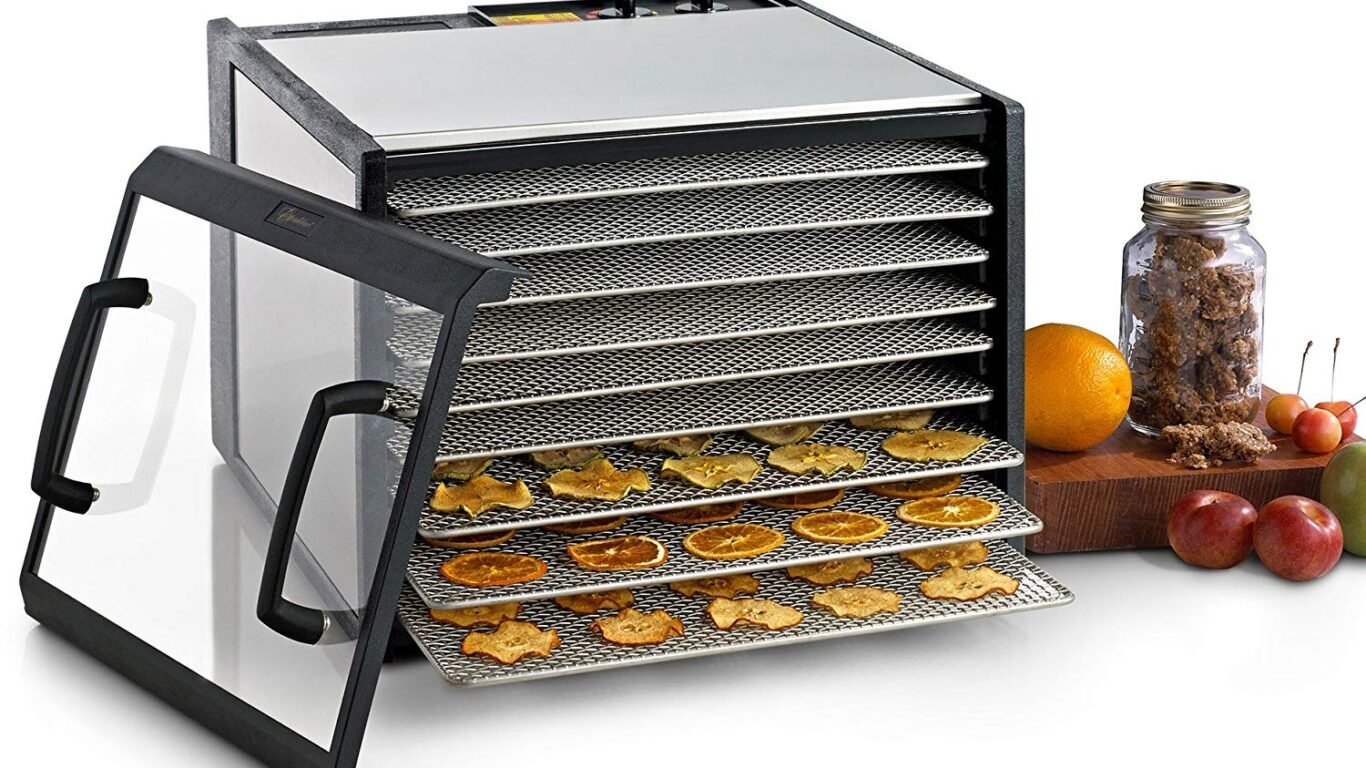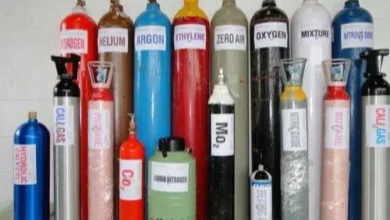Unlocking Food Longevity: Understanding the Dehydrator Machine

In today’s fast-paced world, finding ways to preserve food and make it last longer is essential. One such method that has been gaining popularity is the dehydrator machine. By removing the moisture from food, a dehydrator-machine can help extend the shelf life of fruits, vegetables, meats, and more. But what exactly is a dehydrator-machine, and how can it benefit your kitchen? Let’s dive into the world of food preservation and explore the wonders of the dehydrator-machine.
The Basics of Dehydrator-Machines
Dehydrator-machines are innovative appliances designed to remove moisture from foods, enabling longer preservation by significantly reducing the risk of spoilage. At the core of their operation is a simple yet effective principle: by circulating warm air around the food, moisture is evaporated, leaving behind dried products that can be stored for extended periods. This drying process inhibits the growth of bacteria, molds, and yeast and largely retains the food’s nutritional value and flavor, which is often compromised in other preservation methods.
These machines vary widely in design, from compact, user-friendly models perfect for small kitchens to larger, more complex units suited for enthusiasts or professional use. Key features to look for include adjustable temperature controls, which are crucial for handling different foods with specific drying temperature needs, and a fan for consistent airflow. The machine’s layout and number of trays or racks determine how much food can be dried at once, affecting the overall efficiency and convenience of the drying process.
Understanding the diverse functionalities and specifications of dehydrator-machines empowers users to make informed choices tailored to their preservation needs and culinary ventures. Whether it’s drying herbs, making homemade jerky, or crafting nutrient-rich snacks, mastering the utilization of a dehydrator-machine opens up many possibilities for extending the life and flavor of a wide range of foods.
Why Opt for a Dehydrator-machine?
Opting for a dehydrator-machine in your culinary toolkit offers numerous advantages beyond mere food preservation. One of the standout benefits is the ability to harness the bounty of each season by drying fruits and vegetables at their peak, ensuring you can savor their flavors all year long. This is particularly appealing for those who garden or frequent farmers’ markets, allowing for an efficient way to manage surplus produce before it spoils. Moreover, dehydrated foods offer exceptional convenience, especially for outdoor enthusiasts and those with limited storage space.
Because water content is significantly reduced, these foods are lighter and more compact, making them perfect for backpacking, camping, or maximizing pantry space. This space-saving aspect is complemented by the fact that dried foods, when stored properly, have an impressive shelf life without refrigeration. Another compelling reason to embrace dehydration is it’s nutritional and taste benefits.
Unlike some forms of preservation that can diminish the nutritional content and alter the taste of food, dehydration does an excellent job of locking in vitamins and minerals while concentrating on flavors. This makes it a fantastic option for creating healthy, portable snacks like fruit leathers, veggie chips, and homemade jerky free from the added sugars and preservatives often found in their store-bought counterparts. Choosing a dehydrator-machine is a step towards embracing a sustainable and versatile approach to food preparation, offering a bridge between the desire for convenience and the pursuit of healthy, flavorful eating?
Choosing the Best Dehydrator for Your Kitchen
The choice of the best dehydrator is highly personalized, depending on various factors such as intended use, preferred features, and budget. These considerations will assist you in making an informed decision and ultimately purchasing a machine that caters to your specific needs and lifestyle.
Assess Your Needs:
Begin by evaluating your intended use for the dehydrator. Are you planning on drying small batches of herbs, or are you looking towards preserving bulk quantities of fruits, vegetables, and meats? Your usage will dictate the size and power requirements of the machine you need.
Temperature Control:
Look for a dehydrator with adjustable temperature settings. Different foods require different temperatures to dehydrate properly without losing nutritional content or becoming over-dried. A machine with a range of temperatures offers more versatility.
Timer Functionality:
A built-in timer can be a very convenient feature, allowing you to set the dehydrator to run for a specific period and then automatically shut off. This is particularly useful for overnight drying or longer dehydration processes.
Ease of Cleaning:
Look for a dehydrator that is easy to clean. Removable trays and components that are dishwasher safe can save a lot of time and effort in maintenance.
Air Flow and Heat Distribution:
Uniform air flow and consistent heat distribution are critical for evenly dried products. Some dehydrators use fans at the bottom, while others have fans at the top or side. Consider which design best suits your needs to ensure efficient drying.
Noise Level:
Dehydrators can be noisy when in operation. If noise is a concern, especially for prolonged use, look for reviews or product specifications that mention the noise level. Quieter models may be more suitable for your living environment.
Price and Warranty:
Balance your budget with your needed features. Don’t forget to check the warranty period, as a more extended warranty can offer your investment peace of mind and protection.
Mastering the Art of Dehydration
Embarking on the journey of dehydration requires a blend of knowledge, patience, and creativity. Each food item, from the juiciest fruits to the most robust meats, has its unique requirements for optimal drying. Delving into the specifics, temperature precision is critical—too high, and the food might cook rather than dry; too low, and you risk spoilage. A rule of thumb is to start with the manufacturer’s recommended settings, then adjust based on your observations. Thickness and uniformity of slices directly influence drying time and quality; thinner slices dry faster but require meticulous placement to ensure even airflow.
Pre-treatment methods, such as blanching vegetables or marinating meats, can enhance the dried product’s preservation quality and flavor profile. Keeping a detailed log of your dehydration endeavors—notes on temperatures, times, and techniques—will serve as a valuable reference, helping refine your process. As you grow more accustomed to your dehydrator-machine’s nuances, don’t hesitate to experiment with drying times and settings, pushing the boundaries of traditional dehydration. This hands-on experience not only hones your skills but also unlocks a deeper appreciation for the art and science behind preserving food at its flavorful best.
Creative Uses of a Dehydrator-Machine
A dehydrator-machine opens the door to a realm of culinary creativity far beyond the traditional scope of food preservation. Imagine crafting your herbal tea blends from dried mint, chamomile, or lemon balm harvested straight from your garden or windowsill. Consider the joy of making bespoke spice mixes, drying your chilies, garlic, and herbs to create flavors that can’t be found on grocery store shelves. For those with a sweet tooth, a dehydrator allows for the creation of unique treats like banana or apple chips coated in cinnamon or even pineapple and mango slices turned into chewy, natural candies.
Artists and craft enthusiasts will find a dehydrator-machine equally useful for non-food projects. Drying flowers and leaves preserves their color and beauty for use in homemade potpourri, soap-making, or decorative arrangements. Homemade paper or greeting cards can gain an elegant touch with embedded dried flowers or herbs, adding a personal and rustic charm.
For pet owners, the dehydrator-machine is a tool for creating healthy, preservative-free treats. From sweet potato slices to dried chicken strips or beef jerky, knowing exactly what goes into these treats can provide peace of mind and a happy pet. The versatility of a dehydrator-machine encourages exploration and innovation, transforming simple ingredients into something truly extraordinary and personalized.
Maintenance and Care of Your Dehydrator-machine
Proper maintenance is crucial to ensuring the longevity and efficiency of your dehydrator-machine. Begin by constantly adhering to the manufacturer’s guidelines for cleaning and upkeep. After each use, dismantle the trays or racks and wash them thoroughly with warm, soapy water to remove any food particles or residue. For models with dishwasher-safe components, this step becomes even more convenient. It’s essential to wipe down the interior of the dehydrator as well, using a damp cloth to pick up any bits that may have fallen during the drying process.
Avoid using abrasive cleaners or pads that could damage the surface. Periodically inspect the dehydrator’s air intake and exhaust vents to ensure they are free from obstruction, and check the fan and heating elements for any signs of wear or malfunction. Store your dehydrator in a cool, dry place away from direct sunlight when not in use to prevent any potential damage to its components. By following these simple yet effective practices, you can keep your dehydrator-machine in top working condition, ready for your next culinary adventure.
The Environmental Impact of Using a Dehydrator-Machine
Embracing a dehydrator-machine for food preservation contributes to personal health and culinary creativity and plays a significant role in environmental stewardship. Unlike traditional preservation techniques that rely on energy-intensive processes like freezing or utilising substantial amounts of packaging materials, dehydrators offer a more sustainable alternative. The energy required to dry food is considerably less than that needed to maintain a freezer at optimum temperatures over extended periods. Additionally, dehydrating food reduces the necessity for single-use plastics and other packaging materials, as dried foods can be stored in reusable containers, minimizing waste and decreasing the demand on landfill sites.
By extending the shelf life of produce through dehydration, households can significantly reduce food waste, a significant contributor to greenhouse gas emissions when organic matter decomposes in landfills. This process conserves the resources spent on food production and mitigates the broader environmental impacts associated with agricultural practices. Thus, using a dehydrator-machine aligns with efforts to lead a more eco-friendly lifestyle, emphasizing the importance of resource conservation and waste reduction in our daily routines.
Conclusion
Embracing the dehydrator-machine transforms how we approach food preservation, allowing for creative culinary expressions while emphasizing sustainability. This journey enriches our diets with nutritious, flavorful options and fosters a mindful approach to consumption and waste reduction. As we continue to explore the vast potentials of dehydration, we empower ourselves to make choices that benefit our health, palate, and the planet. The art of dehydration is more than preserving food; it’s about cherishing and maximizing nature’s bounty in harmonious, innovative ways.
FAQs
Q: Is dehydrating different kinds of meats in a dehydrator machine safe?
A: Absolutely dehydrator machines are equipped to handle various types of meats, making them ideal for preparing homemade jerky. It’s crucial, however, to adhere to the specific temperature and time recommendations to ensure the meat is safely dehydrated.
Q: What’s the average time frame for dehydrating fruits and veggies?
A: The duration for dehydrating fruits and vegetables depends on several factors, such as the moisture content of the food, slice thickness, and the dehydrator’s temperature setting. Typically, the process ranges from 6 to 12 hours, but it’s wise to check periodically for the desired dryness level.
Q: Can I dry different food items in my dehydrator-machine simultaneously?
A: Yes, the design of most dehydrator-machines includes multiple trays, which allows for the simultaneous drying of various food items. Rotating the trays during the dehydration process is recommended to achieve even drying across all types of food.
Q: Do I need to pre-treat foods before dehydrating them?
A: Pre-treating certain foods can enhance both their preservation and flavor. For example, blanching vegetables can help retain their color, while marinating meats can enrich their taste. Although not always necessary, pre-treatment can be a beneficial step depending on the food and desired outcome.
| Related Business Listings |
| Contact Directory |
| Local Business Profiles |




